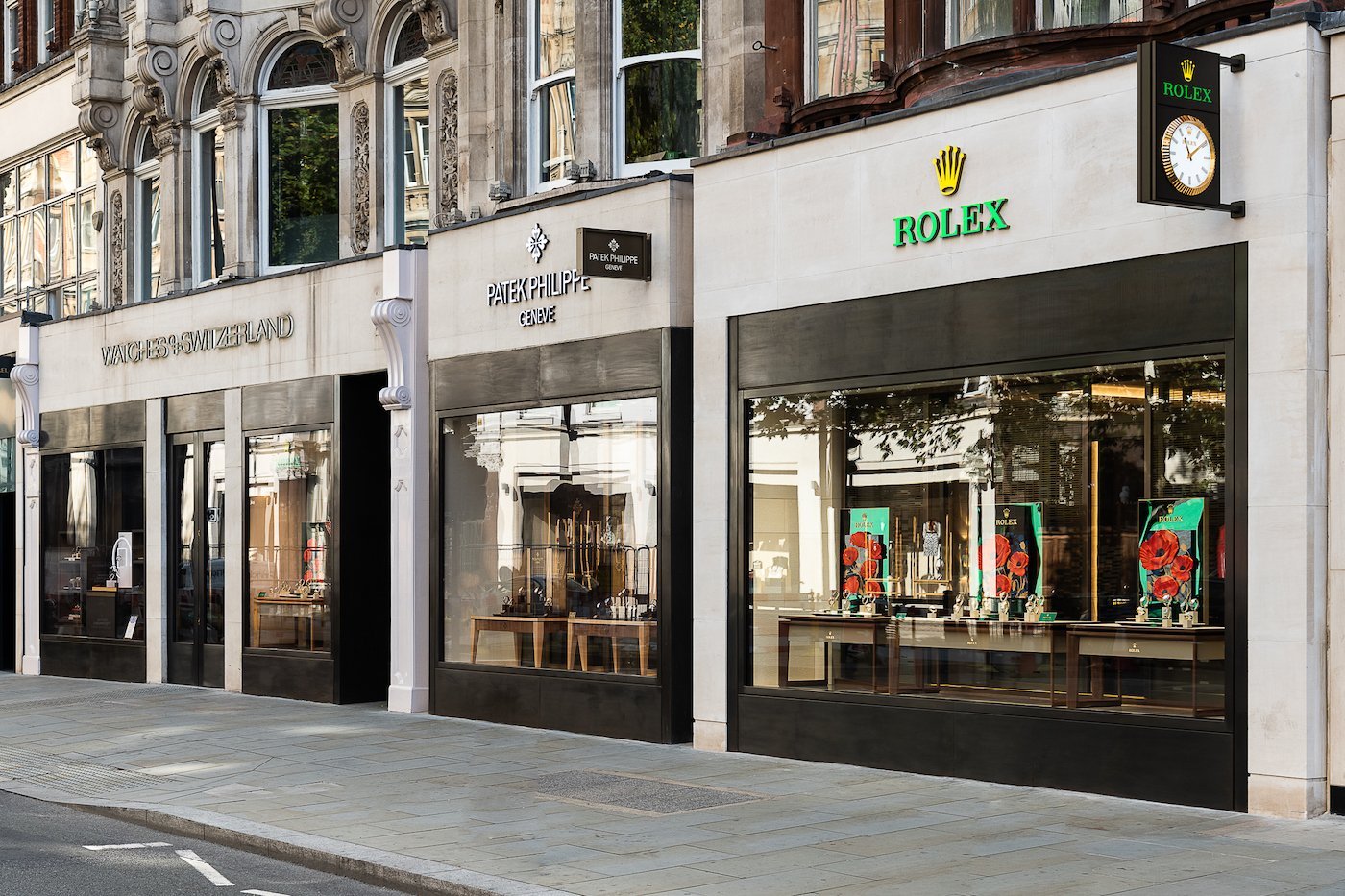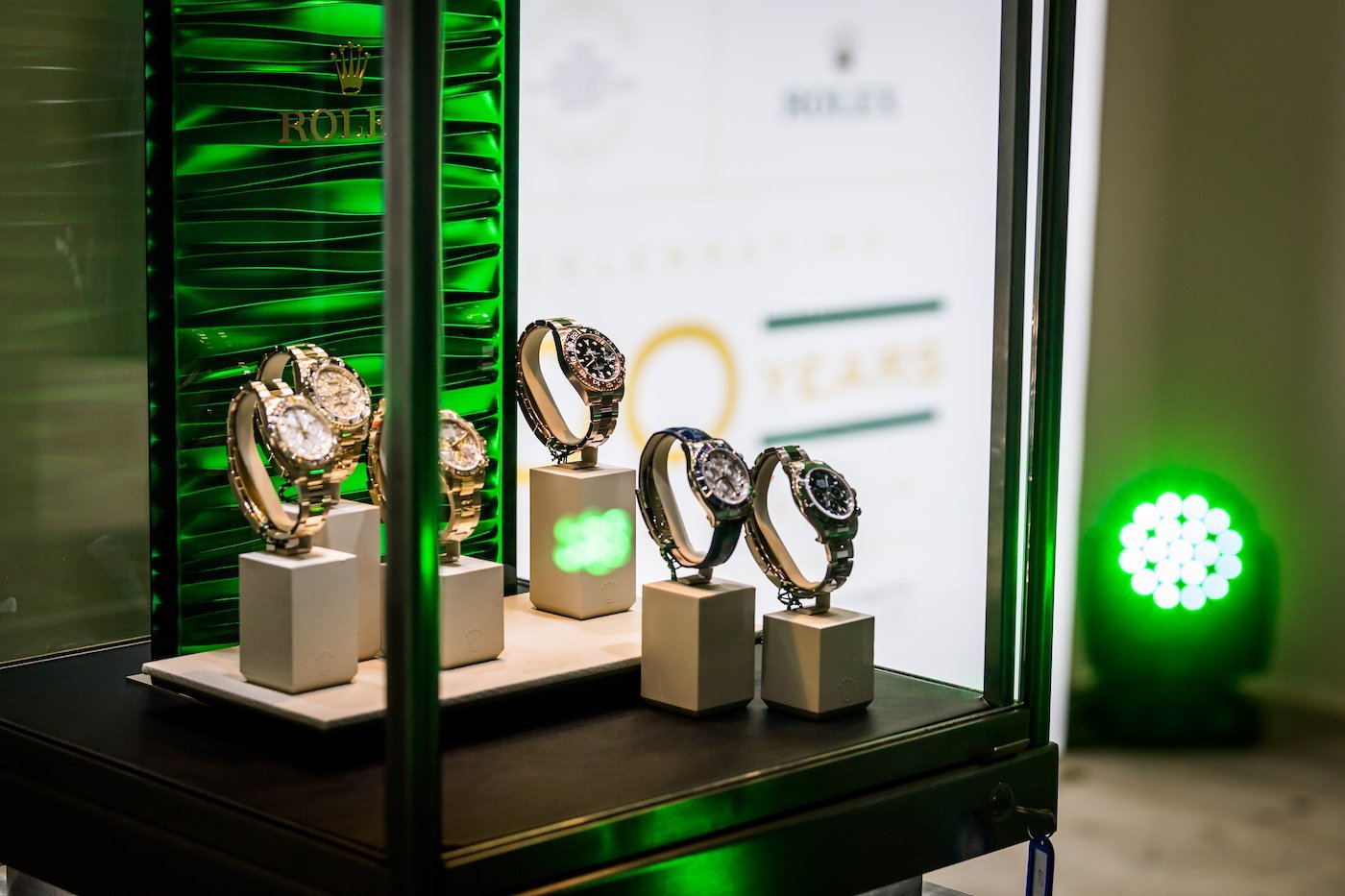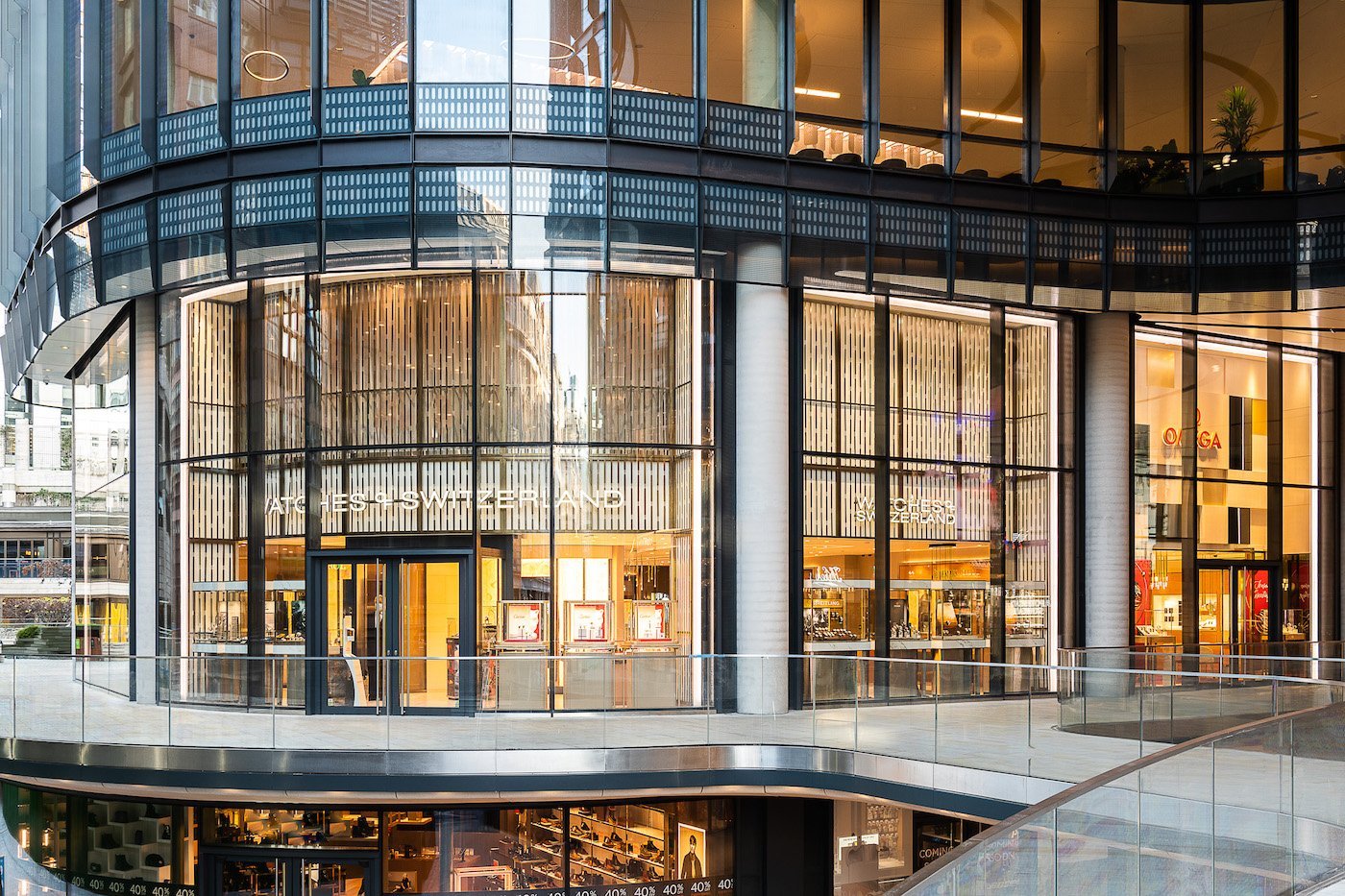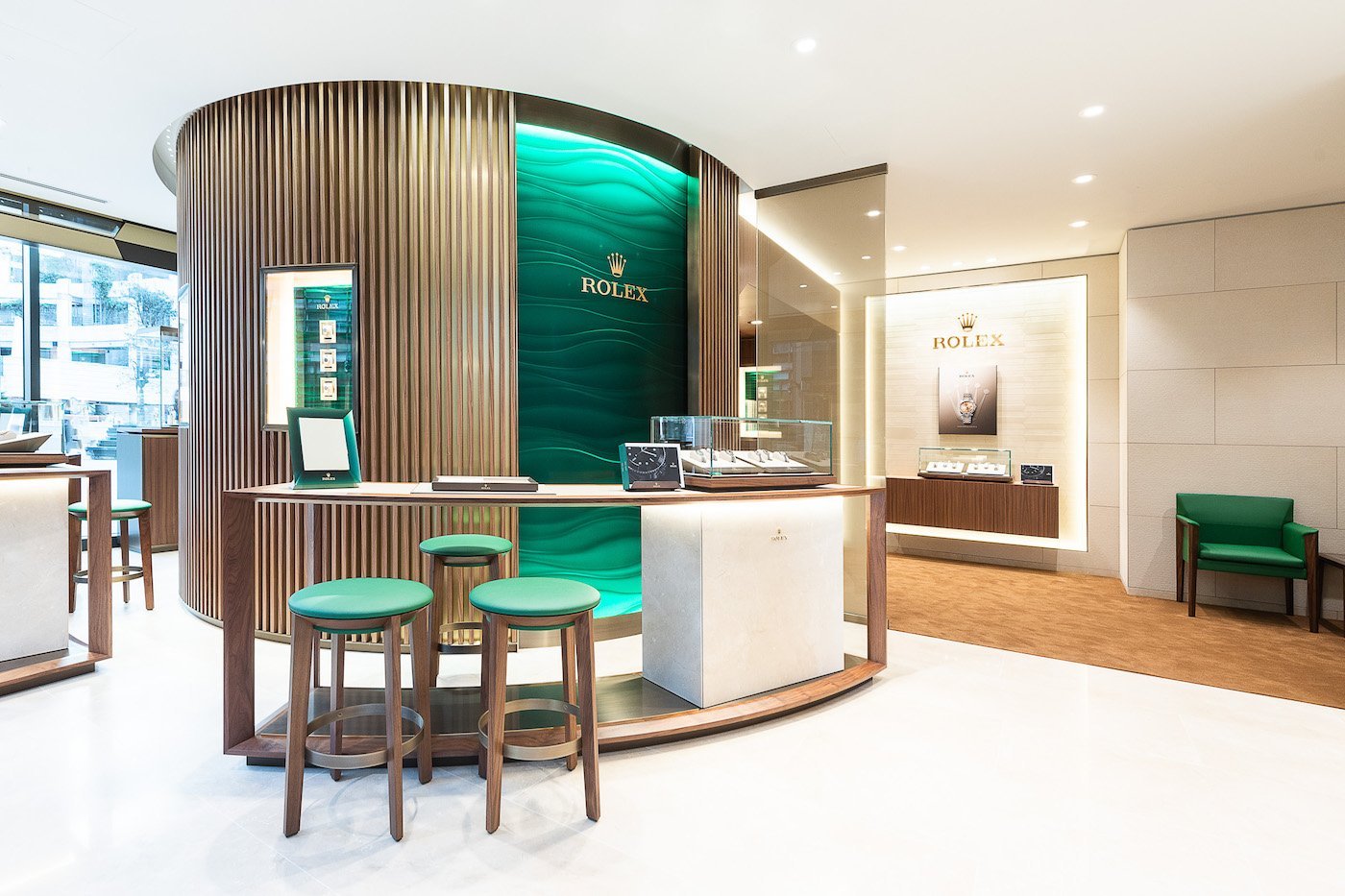ritish retail giant Watches of Switzerland Group, which has been vastly transformed since being taken over by new management in 2014, has unveiled an ambitious Long Range Plan for the five-year period up to 2026. Its goals are to strengthen the group’s luxury watch leadership in the UK, where it is already the dominant retail group; become US market leader after its American breakthrough over the last few years; and last but not least, enter the continental European market.
With a portfolio of over 160 stores across the UK and US, including some 50 mono-brand boutiques (with Rolex, TAG Heuer, Omega Breitling, Audemars Piguet, Tudor, Grand Seiko and FOPE), the group comprises several distinct entities: Watches of Switzerland (UK and US), Mappin & Webb (UK), Goldsmiths (UK) and Mayors (US), with a complementary jewellery offering. It was also very active in travel retail until the pandemic put the brakes on, notably through an extensive presence at Heathrow Airport.
“Through focused investment we have built a modern, digitally advanced multi-channel retailer and have achieved outstanding momentum in the US since our entry into the market in late 2017,” says group CEO Brian Duffy. “We plan to achieve growth through further geographical diversification, becoming the clear leader in the US market, and establishing a presence in the EU with the targeted roll-out of our proven model.”
-

- Brian Duffy, Watches of Switzerland Group CEO
“We plan to achieve growth through further geographical diversification, becoming the clear leader in the US market, and establishing a presence in the EU.”
The latest results for the first half of the 2022 financial year (ending on 31 October 2021) confirm the group’s resilience, along with that of other “super retailers” active across several markets globally. Revenue reached £586.2 million for the period, representing growth of 44.6% compared to 2021 and 40.8% over 2020. This result was led by a significant increase in sales volumes for “non-supply-constrained brands” (i.e. not Rolex, Patek Philippe or Audemars Piguet). The Watches of Switzerland Group now expects record revenue of £1.15 billion to £1.20 billion for the full year.
The group has further revealed that each individual brand showed positive average selling price growth, and that group e-commerce sales grew 28.7% last year. In the US, where sales were up 66.7% compared to 2020, it recently purchased five stores in Plano (Dallas), Vail, Aspen, Greenwich and Minneapolis. In the UK, revenue is up 31.8% compared to 2020, despite the loss of travel retail, which accounted for 33.6% of the group’s sales last year, standing at 1.7% currently.
The group, which has been listed on the London Stock Exchange since June 2019, continues to ramp up the rate of acquisitions, refurbishments and openings of both mono- and multi-brand boutiques. After completing the acquisition of Betteridge and Timeless Luxury in the USA, it plans to open new stores in New Jersey and Cincinnati.
We interviewed Group CEO Brian Duffy.

Europa Star: Could you comment on your latest results and, more broadly, tell us how you coped with a pandemic that is still not over, two years in?
Brian Duffy: With a group revenue of £586.2 million for the first half of our 2022 fiscal year, we are very pleased with our levels of growth and profitability. Our return on capital employed increased to 23.1%. We’ve been dealing with challenges over the last two years, but I feel very good about business going forward.
What’s been your recipe for resilience and growth?
A strong strategic transformation backed up with a successful investment in the US. Since 2014, we have based our strategy on upgrading stores, partnering with brands to invest in technology and marketing, and investing in people through development and training. We follow an investment-led approach and from 2014 to 2019 we registered double-digit growth in sales, with a CAGR +40% in profitability.
“Super-retailers” seem to be developing globally, backed by a dominant position in their home market, which in your case is the United Kingdom.
With yearly total retail sales of approximately £1.3 billion, the UK is the best luxury watch market in the world, as it has the highest per capita retail spending by domestic customers on luxury watches. Between 2012 and 2019, the market grew by a CAGR of 10%, mainly driven by average selling price increases. The UK’s spending ratio per capita is better than Europe and the US, and our footfall is growing in the country. We believe that this differential to other markets reflects retail investment, not customer behaviour. That creates an opportunity to successfully replicate our model in other geographies, and build on the success we have delivered in the US to date.
“The United Kingdom is the best luxury watch market in the world. It has the highest per capita retail spending by domestic customers on luxury watches.”

Why did you choose to invest in the US?
We were initially invited to invest in New York, in particular by Saks Fifth Avenue, as they were looking to develop their watch segment. Because of a lack of investment, the US market for luxury watches is underdeveloped, with retail sales of approximately $4.5 billion. If you bring it back to a per capita ratio, the US market represents only 40% of that of the UK. Between 2012 and 2019, the US market grew by a CAGR of only 2%, with most growth achieved since 2018. It is a very fragmented market with a lot of very small players. When we arrived, there was no real market leader like us in the UK. That led us to open our Hudson Yards boutique in New York, followed by another in SoHo. In parallel, we began negotiating the acquisition of Mayors, which operates 15 stores in Florida and Georgia. Then we were invited to Las Vegas to take over watch retail for Wynn. All in all, these developments gave us a good geographical distribution on both the East and West coasts.
How did you upgrade your presence there?
We started with a strategy of investing in opening new stores, as well as better arranging and in some cases repositioning some existing stores. For instance, we moved to better locations in Las Vegas, and we also relocated some Mayors boutiques. We had a positive mindset when we arrived in the US, but we’ve exceeded our expectations there. Everything seems to be working! In 2022, we’re opening new boutiques at the American Dream mall in New Jersey and in Cincinnati, and we’re also starting a programme of developing mono-brand stores and e-commerce. Looking ahead, we expect our US revenue to grow by a CAGR of 25% to 30% yearly, and we believe the US will outperform the global market, driven by continued investment in retail.
“If you bring it back to a spending ratio per capita, the US market represents only 40% of that of the UK.”

Are you also targeting continental Europe for investment?
Yes, as part of our Long Range plan we want the European market to represent 8% of our total sales by 2026, or in other words, about 130 million euros. Today, in terms of performance and development per capita, the EU is more developed than the US, but less than the UK. The EU luxury watch market has not grown at the same pace as the UK since 2000, and we believe the market is under-invested and under-potentialised. It is also more traditional, so we can appeal to a broader audience than what exists today, because we’re good at social media advertising and store design. The way we will invest in Europe is through a mix of acquisitions and opening mono-brand stores.
Which perform better: mono-brand or multi-brand stores?
We actually make less of a distinction than you would think; it’s about creating a nice space for everyone. Both are dynamic. The best example is the Battersea Power Station project here in London, which is a massive residential and commercial development that will host Apple’s offices. We are going to be there both with a great multi-brand store and with individual Tudor, Omega and TAG Heuer boutiques.
“The way we will invest in Europe is through a mix of acquisitions and opening mono-brand stores.”

After seeing strong growth in mono-brand boutiques operated by the watch brands themselves, this strategy seems to have been undermined by the pressure of the pandemic. What’s your assessment?
Overall, my call would indeed be towards a decrease of brands doing their own boutiques all by themselves. Of course there are exceptions, such as Audemars and Richard Mille, who are moving 100% in this direction. But I don’t see all brands going there, and we will actually continue to work with them through joint ventures. For instance, brands such as Omega and TAG Heuer are expanding their mono-brand store strategy in partnership with us.
The pandemic has accentuated the dominance of a few key brands, both in visibility and in sales. How dependent are you on them?
Historically, Rolex has represented half of our business, and Audemars Piguet and Patek Philippe an additional 8%. But today, these brands are constrained in terms of supply. Their share within our group’s sales has actually reduced from 60.5% to 58.6% over the past year. The next group of brands – Cartier, Breitling, Omega and Tudor – are enjoying strong growth and their average selling prices are on the rise. These brands are becoming a bigger part of our portfolio.
“Historically, Rolex has represented half of our business, and Audemars Piguet and Patek Philippe an additional 8%. But today, these brands are constrained in terms of supply.”
Another segment enjoying strong growth is pre-owned. How do you operate there?
We are focusing on “real” pre-owned since we acquired Analog/Shift and rebranded their business. Then you’ve got a segment of grey market “pre-owned” that is a consequence of supply constraints. But we will keep investing in a vintage offering through Analog/Shift.

Is the share of independent artisanal brands in your portfolio increasing?
Yes, and we are working hard to promote them. In this respect, America has helped us gain greater exposure to the independents. H. Moser & Cie is a great example, and we also love MB&F. Brands that we represent such as Bovet, Armin Strom and Speake-Marin are also a great source of innovation. In a way, you could also consider Grand Seiko, Ulysse Nardin and Girard-Perregaux as smaller brands with growing energy.
Is the future of retail going to be dominated by brands, groups, local retailers, e-commerce specialists or international retailers?
The trend is clear, and the market is clear: to succeed, you have to be multichannel and digital, and that needs a certain scale. There is a natural preference for actors like us, as we see everything as integrated. Brands have an interest in partnering with actors that can achieve a certain scale. Indeed, I strongly believe that the global category of luxury watches remains underdeveloped. Some key high-quality independent local retailers will be here forever, but there is a trend towards fewer, better, more integrated international retailers.
“Some key high-quality independent local retailers will be here forever, but there is a trend towards fewer, better, more integrated international retailers.”





















































